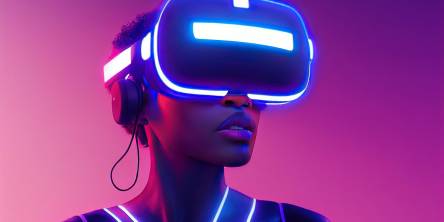How Modern Consumers Personalize Their Everyday Tech: Trends and Techniques Revealed

In today’s fast-paced digital world, personalization is more than just a trend; it’s a necessity. We’re all looking for ways to make our technology reflect our unique preferences and lifestyles. From customizing smartphone interfaces to tailoring smart home devices, modern consumers are taking control of their tech like never before.
As we explore how personalization shapes our everyday technology, we’ll uncover the various tools and techniques that empower us to create a seamless experience. By understanding these trends, we can better appreciate the impact of personalization on our daily lives. Let’s dive into the exciting ways we’re transforming our gadgets to fit our needs and desires.
The Rise of Personalization in Tech
Personalization in technology has surged as a vital component of modern consumer behavior. Consumers now opt for customized features that align with their unique preferences and lifestyles. They prioritize personalization across a range of devices, including smartphones, tablets, and smart home gadgets.
For example, the latest iphone 16 pro max cases come in various designs, allowing users to express their individuality while providing essential protection.
Manufacturers increasingly incorporate customizable options into their products. Many devices now offer settings to adjust themes, layouts, and color schemes, creating a user experience tailored specifically to individual tastes. Smart home technology allows for automated settings that adapt to our habits, such as adjusting lighting and temperature based on personal schedules.
The rise of personalization extends beyond aesthetics. Consumers actively seek functionality that aligns with their daily routines. Fitness trackers that analyze personal health data and suggest workouts tailored to fitness goals exemplify this trend. Furthermore, streaming services recommend content based on viewing history, enhancing user engagement and satisfaction.
Brands recognize the importance of delivering personalized experiences. They employ data analytics to gain insights into consumer preferences, allowing them to offer relevant products and services. This strategic focus fosters loyalty and keeps us invested in brands that understand and support our needs.
Personalization influences the way we interact with technology today. The ability to tailor devices to our specifications leads to enhanced satisfaction and usability, making personalization an essential element of our tech-driven lives.
Read more: How iOS Apps Are Transforming Education Worldwide?
Understanding Consumer Preferences
Personalization shapes modern consumer interactions with technology. We see various factors influencing these preferences, particularly in device customization.
Factors Driving Personalization
Trends drive personalization, including advancements in technology and consumer expectations. Preferences vary, ranging from aesthetic changes like iPhone 16 Pro Max cases to functional modifications such as app layouts and home screen widgets. Data analytics plays a crucial role in understanding these trends, as brands track user behavior to offer tailored solutions. Increased competition among manufacturers also enhances the availability of customizable options, encouraging consumers to take control of their tech.
Impact of User Experience
User experience significantly affects consumer satisfaction. Personalized interfaces, adaptive features, and unique functionalities contribute to a seamless interaction with devices. As we engage with smart home technology, for instance, personalized settings can adjust lighting and temperature based on our habits, creating a comfortable environment. Customization elevates the overall experience, leading to increased loyalty towards brands that effectively meet individual needs.
Techniques for Personalizing Everyday Tech
Modern consumers adopt various techniques to personalize their everyday technology. These methods enable users to create unique experiences that align with individual tastes and lifestyles.
Customizing Settings and Features
We optimize device functionality by adjusting settings and features. On smartphones, we change themes, select wallpapers, and customize ringtones to reflect our personalities. Users can modify app layouts and prioritize frequently used applications for easier access. Smart home devices adapt automatically based on user preferences, adjusting lighting and temperature, enhancing comfort. It's essential to explore the settings of devices, like the iPhone 16 Pro Max, to discover personalization options that elevate user experience and satisfaction.
Utilizing Apps and Tools
We leverage various apps and tools to enhance personalization. Numerous applications provide features for customizing everything from notification sounds to interface design. For instance, third-party launchers allow us to redesign home screens entirely, showcasing tailored widgets and shortcuts. Fitness and lifestyle apps analyze our behaviors and suggest personalized recommendations, fostering a more engaging experience. By utilizing these tools, we can transform our devices into true reflections of our unique preferences.
You May Also Like: How To Turn Your iPhone Into A WiFi Router
The Role of Social Media and Influencers
Social media platforms and influencers play a significant role in shaping how we personalize our everyday technology. Through engaging content, influencers showcase various tech products, including customizable items like iPhone 16 Pro Max cases. Their endorsements often guide our purchasing decisions, as we seek items that reflect our personal style and functionality needs.
Influencers often share tutorials, tips, and comparisons highlighting the latest tech trends. We frequently see posts featuring unique modifications to devices, demonstrating how to achieve personalization. This visual inspiration encourages us to adopt similar trends, creating a community around customized technology.
Social media also facilitates discussions regarding product features and aesthetics. We engage in conversations surrounding what makes a product uniquely ours, from app customization to selecting accessories like iPhone 16 Pro Max cases that enhance both utility and style. Viral challenges prompt us to explore new ways to personalize our devices, emphasizing creativity and individuality.
Moreover, targeted advertisements on these platforms lead us to discover specialized products tailored to our preferences. These ads often highlight customizable options, reinforcing our desire to tailor our devices to match our lifestyles. We witness a growing trend of brands teaming up with influencers to launch exclusive collections, further driving the motivation for personalized technology.
Social media and influencers significantly impact our personalization journey in the tech realm. By showcasing innovative features and customizable accessories, they help set trends that inspire us to enhance our everyday technology experience.
Future Trends in Tech Personalization
Personalization trends in technology continue to evolve rapidly, reflecting consumer desires for individuality. One major trend is the increasing demand for customizable accessories, such as iPhone 16 Pro Max cases. These cases allow users to express their personal style, combining aesthetic preferences with functional needs. Companies are now offering options that range from unique designs to color options, catering to diverse tastes.
Smart home technology is also advancing. Intelligent systems are becoming more adaptive, learning user habits to optimize daily routines. For example, voice-activated assistants can tailor responses and actions based on user preferences, enhancing overall convenience.
Data analytics plays a crucial role in shaping personalized experiences. Brands utilize insights gained from consumer interactions to refine product offerings and recommendations. This data-driven approach ensures that consumers receive suggestions that align with their behavior and preferences, fostering loyalty and satisfaction.
Wearables, such as fitness trackers, are incorporating new personalization features. These devices now offer customizable dashboards and workout suggestions tailored to individual fitness goals. Users can adjust settings based on performance metrics, making the tech experience more aligned with personal objectives.
Social platforms continue to influence personalization trends. Users share their customized tech, showcasing unique setups and styles that inspire others. Content creators highlight specific products, such as customizable gadgets and accessories, driving interest and encouraging consumer experimentation.
Future trends in tech personalization signify a shift toward highly individualized experiences. As consumers increasingly seek products that resonate with their identity, manufacturers must keep innovating, ensuring that technology remains relevant and engaging in daily life.
Similar Articles
Compare hydraulic and traction residential elevators to find the best fit for your home. Learn how each system works, their pros and cons, space needs, energy use, and maintenance requirements.
Extend the lifespan of your commercial marina docks with proactive maintenance. Learn essential inspection routines, material-specific care, and safety tips to protect your investment and ensure long-term dock performance.
Learn the key factors in designing an engineered fall protection system. Discover how hierarchy of controls, task analysis, structural integrity, and fall clearance ensure safety and compliance.
Today, modern businesses face constant pressure to operate with maximum efficiency. This requires a technology infrastructure that is both agile and robust. However, the traditional model of on-premises data centers often has significant limitations. These legacy systems can drain valuable resources from teams.
When people are hungry, standing in line for a table feels tiring and unpleasant. In fact, research shows that most individuals will just walk away if they have to wait longer. They will go and find another place to eat.
In the early stages of designing new community centers, fire stations and administration buildings, city planners and architects are forced to make a crucial decision: What building material is best suited for providing the most value, safety and longevity to the public?
Amazon Simple Queue Service (SQS), Simple Notification Service (SNS), and EventBridge are just a few of the messaging services that AWS provides to meet various demands when it comes to creating scalable and effective cloud systems.
Wearable technology, embracing devices small enough to be worn unobtrusively, constitutes a market that keeps expanding, and the momentum shows little sign of slowing
For job seekers, grasping the basic functions of Applicant Tracking Systems (ATS) is the first step in overcoming common job search barriers.









